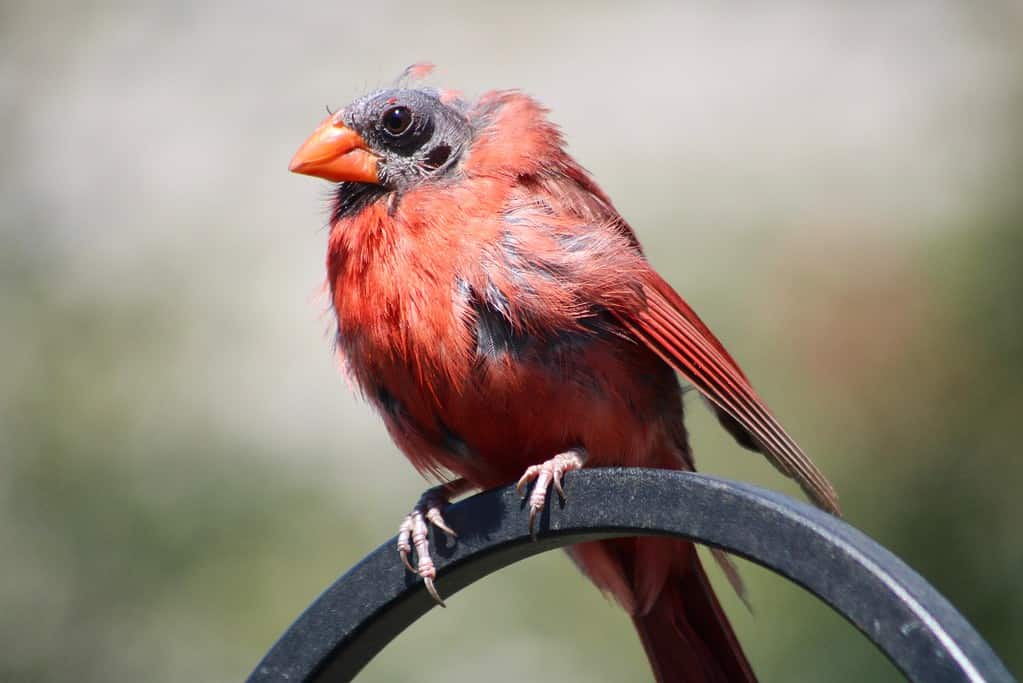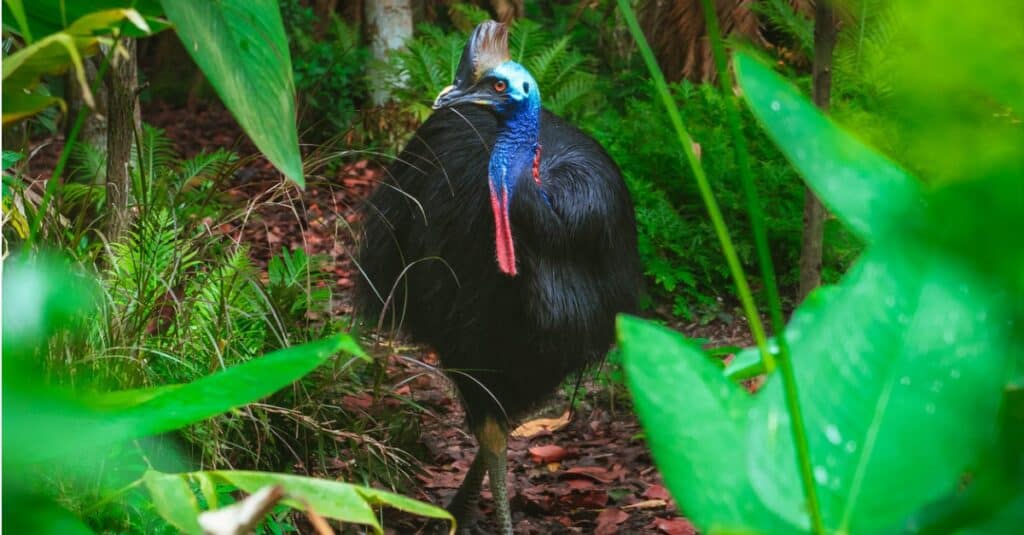Flight feathers are the large, rigid feathers on a bird’s wings and tail that facilitate flight.
Flight Feathers on the Wings
Generally, birds have two types of specialized flight feathers that help them fly. Remiges are the ones located on their wings, and the rectrices are the ones located on their tails.
The primary function of a bird’s flight feathers is to aid the animal in developing thrust and lift when flapping its wings, to steer, and to help control the animal’s speed. These feathers connect to the skin or bone via the calamus. Using muscles in the follicles surrounding the structure, a bird can exert control over their feathers and change the way they fly.
The number of flight feathers that a bird possesses varies between species. Also, these specialized structures can serve numerous purposes aside from facilitating a bird’s travel.
Specialized flight feathers can also be used for:
- Mating rituals such as those seen in peafowl.
- Silent flight for higher hunting success.
- Creating threat displays to make the bird appear bigger.
Furthermore, flight feathers can be broken down into three categories based on their location and function. The structures located on the wings are called primaries, secondaries, and tertials. However, the flight feathers on the tail are symmetrical and serve roughly the same purpose as one another. They do not have special designations or ordering.
Primaries
The primary feathers are the outermost ones that are attached to the fused carpus and metacarpus, the “hand” of the bird. Birds can have anywhere between 9 and 10 primaries. They are located at the bottom of the wing when it is folded, but they’re the outermost part of the wing during flight. Primaries have long quills and provide much of the power during flight.
Secondaries
The secondary feathers are those located inside of the primaries, closer to the body and on the bird’s “arm.” These feathers are used to help sustain flight and provide lift. A bird can have between 9 and 25 secondaries depending on the species.
Tertials
The tertials are oriented closest to the bird’s body on the posterior of the wing. Tertials are also called humerals, and they often number between three and four feathers. These are short feathers located on the rear portion of the wing when the bird is flying. They’re useful for providing extra lift, but their most important function is acting as protection for the other flight feathers.
Tail Feathers
A bird’s tail feathers are often considered flight feathers as well. They act as a rudder for the bird in flight, helping the animal to steer, maintain stability while flying, and slow down. Typically, birds will have between 10 and 12 of these, but that can vary between species.

The primaries are necessary for generating flight power.
©Breck P Kent/Shutterstock.com
What Are Flight Feathers Called on the Wings and Tail?
The primary feathers on a bird’s wings and tail have different names. The flight feathers on the wings are known as remiges while the tail feathers are called rectrices.
The word remiges come from the Latin word for an oarsman, and it is an apt name. The bird can use their wings to gain speed and steer while flying. These feathers are often asymmetrical, but the wings are symmetrical on the bird.
The term rectrices is another Latin word that means “helmsman.” These help the bird steer and lower its speed during flight. For the most part, rectrices are symmetrical.

Tail feathers are useful for helping the bird come to a stop.
©sandymsj/Shutterstock.com
Can Flight Feathers Grow Back?
Yes, a bird’s flight feathers can grow back over time. However, the process is often slow and depends a great deal on how the feather was damaged in the first place. The bird’s body does not immediately start growing back new feathers if one is lost.
Instead, a bird’s feathers only grow back during a molting phase. The bird may require several months or upwards of a year or two to grow back the feather. However, if the follicle that housed the feather was severely damaged when the bird lost the feather, the process can take longer or not occur at all.
Fortunately, many birds generate more power than they need to fly, so the loss of a few feathers will not prevent them from flying. Yet, a bird that loses enough of its flight feathers will not be able to take to the skies or maintain altitude.

A bird needs to molt before re-growing lost feathers, a process that can take weeks, months, or longer.
©Jaclyn Vernace/Shutterstock.com
Do Flightless Birds Have Flight Feathers?
No, flightless birds do not have flight feathers. Most if not all of the feathers that cover their bodies are limp and would not help the bird take flight. Even though they are vestigial structures, these feathers are not without any purpose. Sometimes, they can be used to help the animal blend into its surroundings or to help them stay warm.
Aside from not having feathers that would help them stay aloft, flightless birds lack other important flight structures. These creatures do not have a keeled sternum, for example. Without the keel, a bird cannot generate the power needed to fly.

Cassowaries have feathers, but they’re not capable of flight.
©iStock.com/Henry Soon







